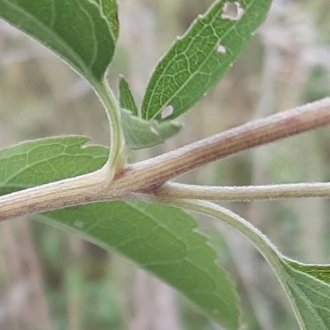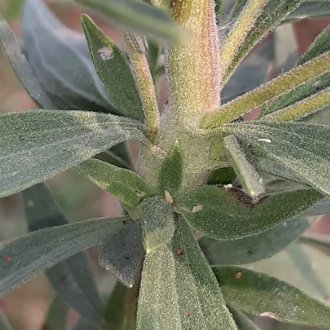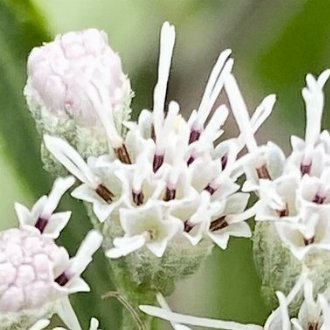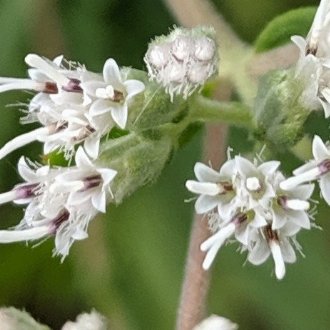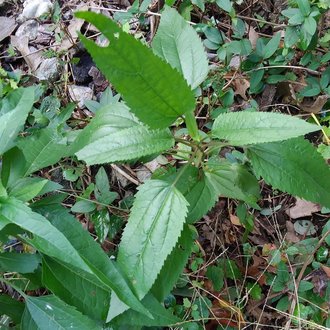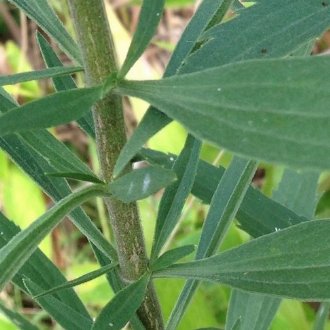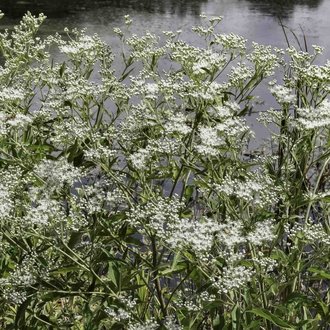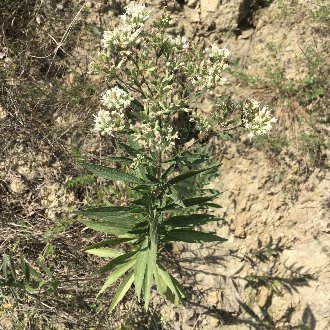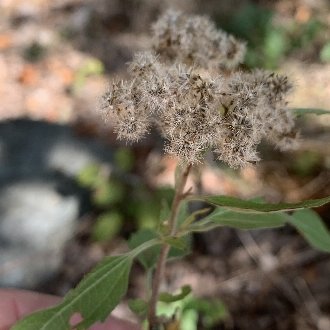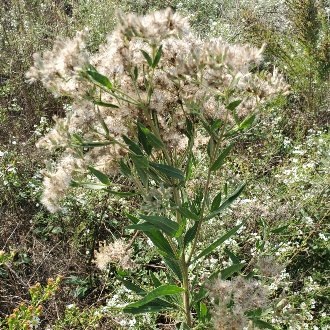Late Boneset vs Tall Thoroughwort
These similar plants have a wide range of overlap and often occur together in open, disturbed ground. They are easily told apart by a close look at their leaves, flowers, or seedheads. Their names are misleading in that late boneset can sometimes grow taller, and their bloom times are similar. Eupatorium serotinum ranges into wetter habitats, more acidic soils, and ranges farther south, whereas Eupatorium altissimum ranges into drier habitats, prefers higher-pH soils, and ranges farther northwest. Overlap is greater in anthropogenic habitats than in natural areas. These two species can hybridize, so it may not be possible to identify all individuals.
Late Boneset (Eupatorium serotinum) | Tall Thoroughwort (Eupatorium altissimum) |
A perennial of sunny, disturbed, moist areas, native to the southeastern to central US, expanding into the northeast. | An upright perennial of dry, sunny, disturbed habitats, often on high-pH soils, native to the eastern to central US and expanding into the northeast. |
Except in the inflorescence, leaves are connected to the main stem by a conspicuous petiole (stem) of considerable length (10–25 mm.) Photo © Hana Oshima, CC BY 4.0. | Leaves are often sessile (leaf blade connected directly to the main stem) or occasionally with a short petiole (stem.) Photo © Lindsey G., CC BY 4.0. |
9-14 florets per head Photo © Sandy Wolkenberg, CC BY 4.0. | Usually 5 florets per head Photo © pobrito, Public Domain. |
Leaf shape variable but usually does not taper smoothly at the base; base is often abrupt and angular. Leaves average wider relative to their length, and thinner. Photo © Ira Gershenhorn, Public Domain. | Leaves taper smoothly and gently at the base. Leaves average narrower and thicker. Photo © Matt Schultz, Public Domain. |
Can be found in wetter habitats. Photo © David Hebert, CC BY 4.0. | Can be found in drier habitats. Photo © Mathew Zappa, CC BY 4.0. |
Seedheads have smaller radius, look finer-textured at a glance. Photo © Jeff Clark, CC BY 4.0. | Seedheads have a larger radius, look coarser-textured at a glance. Photo © Alex Zorach, CC BY-SA 4.0. |
References & External Resources
These short lists show only links helpful for ID. For a complete list of references and resources also covering other aspects of ecology, visit the links section of the full article on each plant, which is the first entry here.



